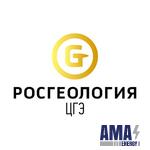Processing Seismic data
Processing of 2D / 3D seismic materials is carried out both according to standard and special processing procedures taking into account the specifics of the oil and gas province.
For each project, a database of 2D / 3D seismic materials is created, starting from the field work stage to the final processing stage.
At this stage, both proprietary and acquired software systems and technologies are used: OMEGA 2 (Western Geophysical), PSDM (JSC "TsGE"), Geodepth (Paradigm Geophysical).
Standard Processing Procedures
Initial data:
- seismic records or copies of data after field processing;
- operator report;
- SPS files.
Processing Method:
- analysis of the source data (seismic records, reports, data on the study of high-frequency measurements, etc.);
- testing of the main processing parameters with the participation of the Customer's supervisor;
- processing according to the graph selected in the Geological task;
- processing according to additional procedures specified in the Geological task.
In the process of performing work, the quality of the materials obtained is regularly assessed, the program for testing processing parameters is specified, if necessary, and the volume of work is redistributed among the contractors.
The representative of the Customer has a casting vote in evaluating intermediate materials and determining a program for testing processing parameters.
Based on the test results, the final processing graph is agreed and determined, including a set of processing procedures with the selected parameter values.
Testing results are documented in the form of a report with the resulting figures, conclusions and parameters are recorded in the protocol or act .
When processing data, the continuity of work is guaranteed, and special attention is paid to the timing of its implementation.
Base processing graph:
- input data input and their translation into processing format;
- creation of the project database (description of the geometry of the arrangement, the coordinates of the parking areas of the air defense and the security and control of SPS files)
- geometry input to trace headers;
- control of the correct description of the geometry;
- calculation of static corrections for the relief for a given level of reduction;
- obtaining the layout of the lines of the explosion and reception, relief, multiplicity;
- obtaining relief maps, static corrections by sources and receivers;
- viewing material and editing seismogram traces, polarity analysis;
- restoration of amplitudes (taking into account geometric discrepancy);
- attenuation of low-speed interference waves;
- reduction of the waveform to the minimum phase form;
- deconvolution taking into account surface conditions (in several windows) and band-pass filtering;
- amplitude normalization of traces (surface-consistent);
- sorting of seismic data by OST;
- Isolation and tracking of the first arrivals of a refracted wave;
- calculation of static corrections from refracted waves;
- summation with a priori static and kinematic corrections;
- analysis of summation rates (three iterations);
- correction of static corrections (three iterations);
- summation with adjusted static and kinematic corrections;
- attenuation of multiple waves by seismograms OST or OGT;
- selection of muting parameters;
- correction of residual phase shifts;
- summation to obtain the final total data cube;
- zero phase deconvolution and bandpass filtering;
- random noise attenuation (FX deconvolution);
- amplitude normalization of total traces;
- preparing a speed cube for migration;
- performing migration;
- zero phase deconvolution and bandpass filtering;
- attenuation of random interference (FXY-deconvolution);
- amplitude normalization of total traces;
- tape recording in SegY format of migrated cuts;
- preparation of a processing report.
Special Processing Procedures
Processing before summation:
- quality control of field observations with writing a separate report;
- compensation of the frequency absorption of the signal by the medium (Q-filtering);
- spectral balancing;
- additional deconvolution taking into account surface conditions;
- additional surface-consistent amplitude normalization of traces;
- calculation of static corrections by the method of tomography using refracted waves;
- calculation of the low-frequency component of static corrections to compensate for the effect of high-frequency inhomogeneities of the VChR;
- velocity analysis taking into account anisotropy;
- spectral whitening by seismograms;
- attenuation of random noise by seismograms;
- additional suppression of multiple waves according to OST seismograms according to the RADON algorithm;
- additional correction of residual phase shifts;
- temporary migration before summation;
- depth migration before summation;
- AVO analysis;
- change of a sampling step by 2 times.
Processing after summation:
- additional deconvolution in total;
- total spectral whitening;
- additional attenuation of random interference in the amount;
- interval velocity seismic inversion;
- 3D signal / signal mapping.

